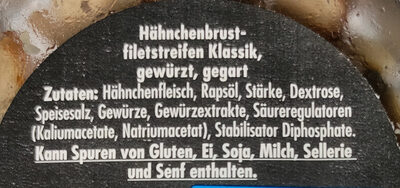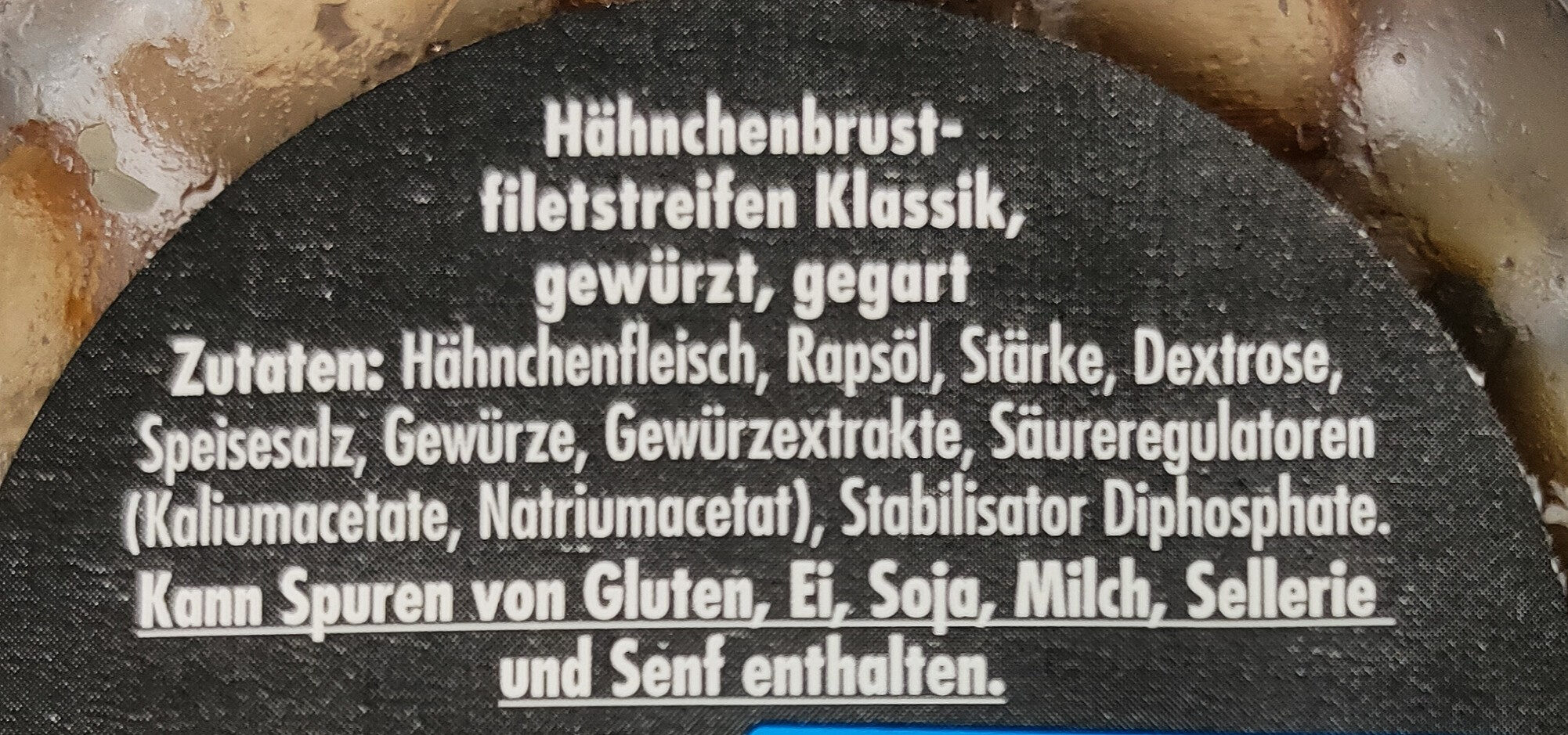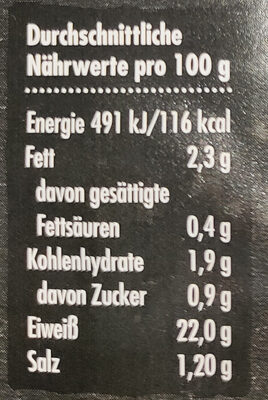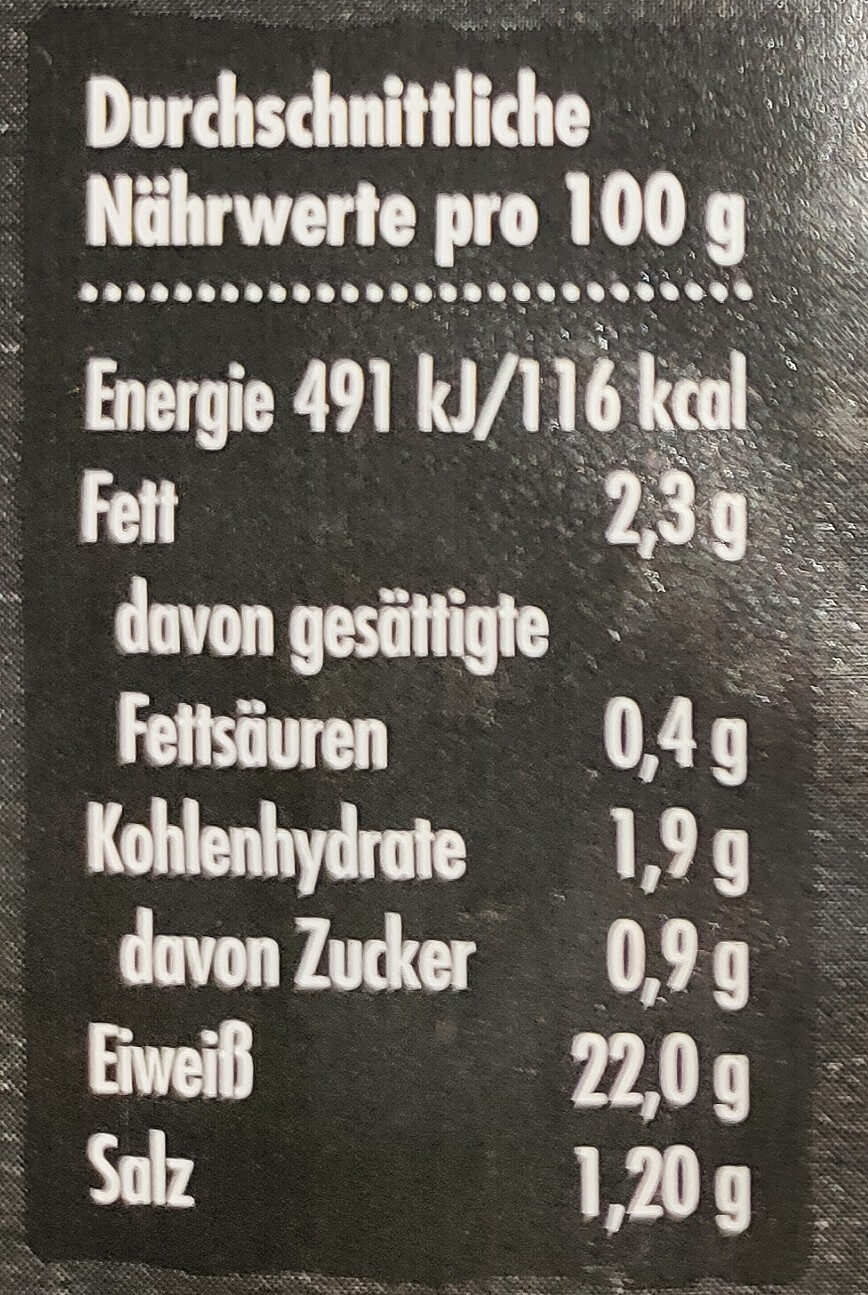Hähnchenbrust Filetstreifen - Klassik - Penny Ready - 150g
Ambiguous barcode: This product has a Restricted Circulation Number barcode for products within a company. This means that different producers and stores can use the same barcode for different products.
×
This product page is not complete. You can help to complete it by editing it and adding more data from the photos we have, or by taking more photos using the app for Android or iPhone/iPad. Thank you!
×
Barcode: 28428671
Quantity: 150g
Packaging: Plastic
Brands: Penny Ready
Categories: Meats and their products, Meats, Chicken and its products, Poultries, Chickens, Chicken breasts, de:Hähnchenbrustfilet in Streifen
Traceability code: DE ST 01782 EG
Stores: Penny
Countries where sold: Germany
Matching with your preferences
Environment
Carbon footprint
Packaging
Transportation
Report a problem
Data sources
Product added on by openfoodfacts-contributors
Last edit of product page on by packbot.
Product page also edited by professordoc, teolemon.
If the data is incomplete or incorrect, you can complete or correct it by editing this page.










